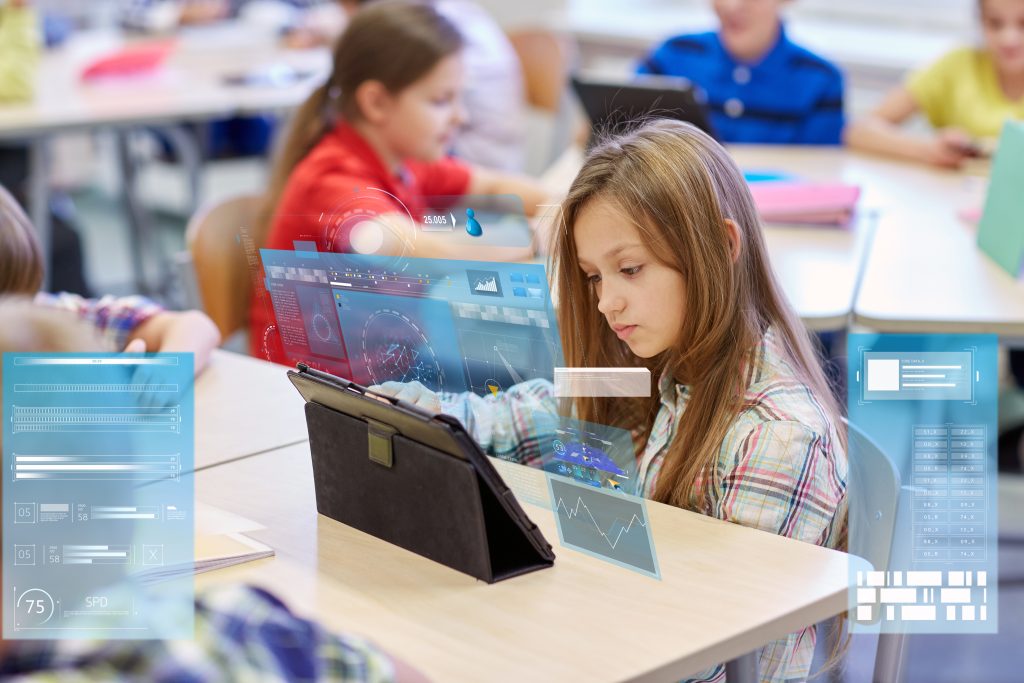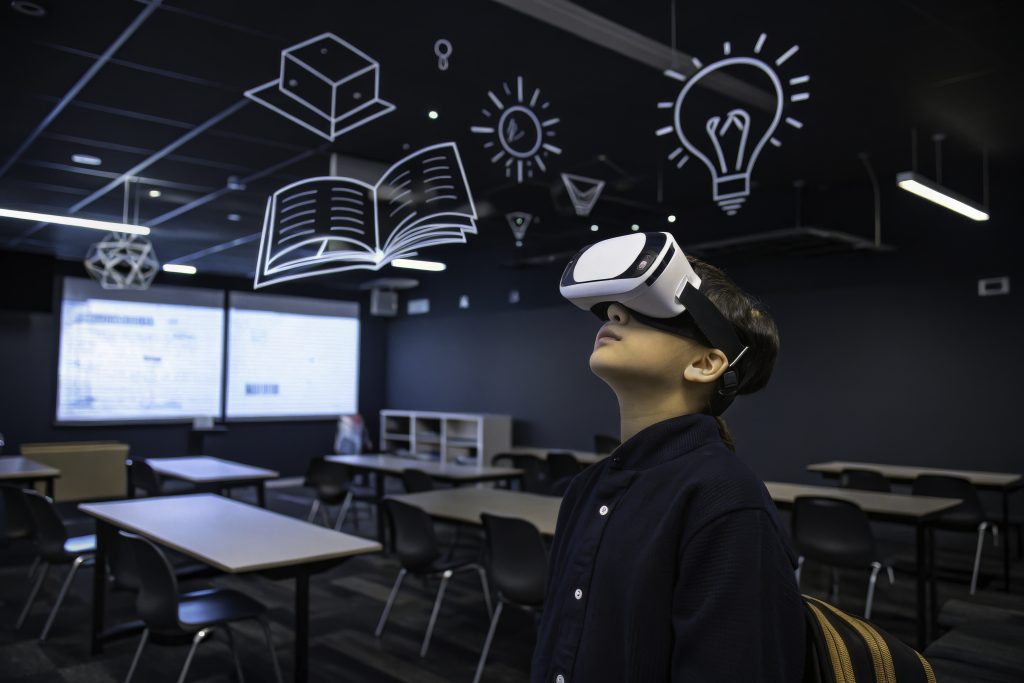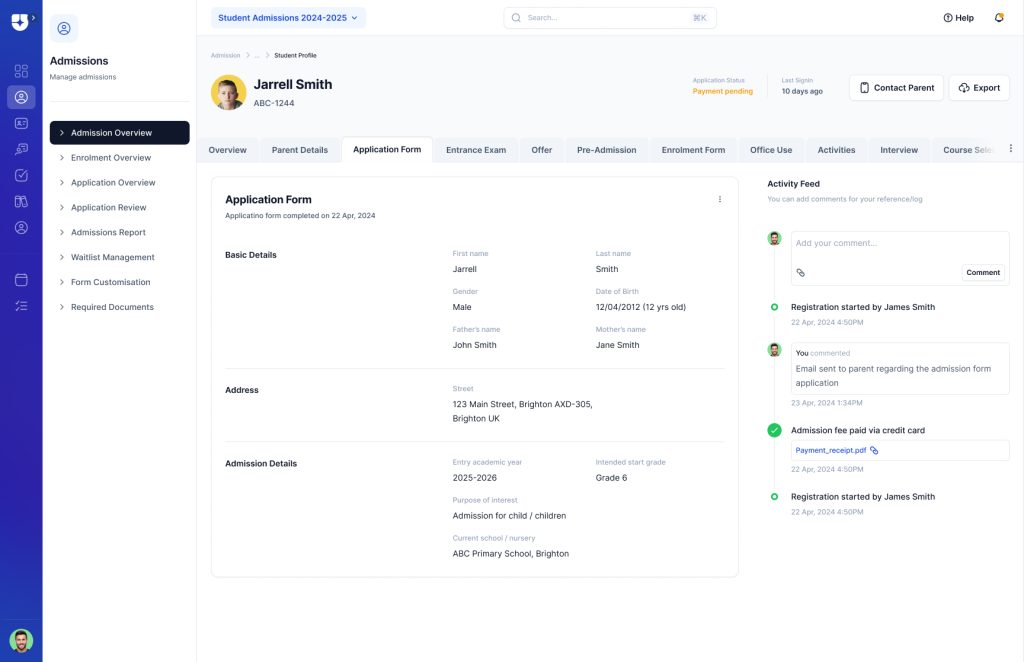Introduction
The education technology (EdTech) sector is evolving rapidly with advancements in artificial intelligence, immersive technologies, and data analytics. These innovations are transforming educational institutions by enhancing learning outcomes and boosting operational efficiency. For school leaders, staying informed about trends in educational technology for teachers and various types of educational technology is essential. This guide explores the 2025 EdTech landscape and offers actionable insights for leveraging technology in schools.
Introduction to the EdTech Revolution
The EdTech revolution is not merely about adopting new tools; it is about creating a holistic learning environment that fosters engagement, inclusivity, and innovation. As we move into 2025, several key trends are emerging that will define the future of education:

- • Personalised Learning: This approach uses AI and data analytics to tailor educational experiences to individual student needs. By identifying learning gaps and preferences, platforms like adaptive learning apps and AI-driven tutoring systems allow students to progress at their own pace. This not only boosts academic achievement but also fosters a love for lifelong learning.
- • Immersive Technologies: Virtual Reality (VR) and Augmented Reality (AR) are revolutionising classrooms by blending physical and digital worlds. Students can interact with 3D models and simulations, bringing abstract concepts to life. For instance, history lessons can transport learners to ancient civilisations, while biology classes can offer virtual dissections. These tools enhance engagement and comprehension, making complex subjects more accessible.
- • Nanolearning: In response to shrinking attention spans, nanolearning delivers content in bite-sized modules that can be consumed in minutes. This method uses short videos, interactive quizzes, and micro-lectures to make learning efficient and engaging. Nanolearning is especially suitable for on-the-go education, catering to busy students and professionals alike.
- • Gamified Education: Gamification integrates game-like elements such as rewards, leaderboards, and challenges into educational content. This approach improves student motivation and retention while fostering collaborative skills. Gamified platforms are increasingly popular in subjects like mathematics, coding, and language learning.
- • Data-Driven Insights: Data analytics tools are empowering school leaders with actionable insights into student performance, engagement levels, and curriculum effectiveness. By analysing these metrics, educators can make data-informed decisions to refine teaching strategies and allocate resources more efficiently.
The Role of Artificial Intelligence in EdTech

AI is the backbone of many EdTech innovations in 2025. From automating administrative tasks to enabling personalised learning paths, AI enhances both teaching and management processes. For example:
- • AI-Powered Chatbots: These provide instant support to students, answering queries and guiding them through course materials.
- • Predictive Analytics: AI helps identify at-risk learners early, allowing educators to intervene with targeted support.
- • Automated Grading Systems: AI reduces teacher workload by automating grading processes, freeing educators to focus on teaching and mentoring.
Moreover, AI-driven intelligent tutoring systems offer one-on-one support to students. These systems adjust their teaching strategies based on student responses, providing a level of personalisation difficult to achieve in traditional classroom settings.
Challenges for School Leaders
While EdTech offers immense potential, it also presents several challenges that school leaders must address:
- • Digital Divide: Ensuring equitable access to technology for all students remains a priority. Schools must implement strategies to bridge this gap, whether through device loans, internet access initiatives, or partnerships with technology providers.
- • Data Privacy: Protecting sensitive student information is critical as schools adopt data-driven tools. Implementing robust data protection policies and ensuring compliance with privacy regulations are essential
- • Teacher Training: Educators need ongoing professional development to effectively integrate new technologies into their teaching practices. This includes training on how to use EdTech tools, interpret data analytics, and design engaging digital content.
Strategic Recommendations for School Leaders
To maximise the benefits of EdTech while mitigating challenges, school leaders should consider the following strategies:

- 1. Invest in Scalable Solutions: Choose platforms that can grow with your institution’s needs. Scalable solutions ensure that your EdTech investments remain relevant as your school evolves.
- 2. Prioritise Inclusivity: Ensure all students have access to devices and internet connectivity. This may involve partnering with local businesses or government initiatives to provide resources for underprivileged students.
- 3. Focus on Training: Provide teachers with robust training programmes to enhance their digital literacy. This includes workshops on using EdTech tools, understanding data analytics, and designing engaging digital content.
- 4. Monitor ROI: Regularly evaluate the impact of EdTech investments on student outcomes. Use data analytics to assess which tools are most effective and adjust your strategy accordingly.
- 5. Collaborate with Stakeholders: Engage parents, teachers, and students in decision-making processes. This ensures that everyone is aligned with the vision for EdTech integration and helps build a supportive community.
Future Outlook
The global EdTech industry is projected to grow significantly, with investments pouring into AI-driven personalisation, immersive technologies, and gamified education. As technology continues to evolve, school leaders must stay informed about emerging trends to create adaptive electronic learning environments that prepare students for the future.
Emerging technologies like blockchain and the Internet of Things (IoT) are also expected to play a role in EdTech. Blockchain can enhance data security and transparency, while IoT can create smart inclusive classrooms that adapt to student needs in real-time.
Case Studies: Successful EdTech Implementations

Several schools have already seen success with EdTech implementations:
- • Personalised Learning Platforms: Schools in the UK have reported significant improvements in student engagement and academic performance after implementing AI-driven learning platforms.
- • VR in Education: A US-based school used VR to teach history, resulting in higher student interest and better retention of historical facts.
- • Gamification in STEM: A Canadian school integrated gamified elements into its STEM curriculum, leading to increased student participation and improved test scores.
These examples illustrate the potential of EdTech to transform educational outcomes and highlight the importance of strategic planning and collaboration in successful implementations.
Conclusion
The EdTech landscape of 2025 presents both opportunities and challenges for school leaders. By embracing these innovations thoughtfully, educational institutions can transform challenges into opportunities—ensuring that every student thrives in an increasingly digital world. This guide serves as a roadmap for navigating the dynamic EdTech environment, providing actionable insights to help schools harness technology’s transformative power—including the growing role of AI in education—to deliver exceptional new educational technology experiences while fostering innovation and inclusivity.
As we move forward, it is crucial for educators and policymakers to work together to create a supportive ecosystem that encourages innovation, equity, and excellence in education. With the increasing integration of artificial intelligence and education, there is a clear need to explore how AI for educators can enhance teaching methodologies and learning outcomes. By thoughtfully bridging AI and education, we can ensure that the benefits of EdTech are accessible to all, shaping a brighter and more equitable future for generations to come.
““In 2025, educational technology isn’t just a tool — it’s the backbone of personalised learning, empowered teaching, and data-driven school leadership”
FAQs
1. What is the significance of personalised learning in EdTech?
Personalised learning leverages AI and data analytics to tailor educational experiences to individual student needs. It identifies learning gaps and preferences, allowing students to progress at their own pace. This approach not only improves academic performance but also fosters a love for lifelong learning.
2. How can immersive technologies like VR and AR benefit classrooms?
Immersive technologies such as Virtual Reality (VR) and Augmented Reality (AR) enhance engagement by bringing abstract concepts to life. For example, history lessons can transport students to ancient civilisations, while biology classes can offer virtual dissections. These tools make complex subjects more accessible and engaging.
3. What challenges do school leaders face when implementing EdTech?
School leaders often encounter challenges such as bridging the digital divide, ensuring data privacy, and providing adequate teacher training. Addressing these issues requires strategic planning, investment in infrastructure, and ongoing professional development for educators.
4. How does AI contribute to the EdTech landscape?
AI plays a critical role in EdTech by automating administrative tasks, enabling personalised learning paths, and offering predictive analytics to identify at-risk students. Additionally, AI-powered tools like chatbots and intelligent tutoring systems provide instant support and customised teaching strategies.
5. What steps can schools take to ensure successful EdTech integration?
To ensure successful integration, schools should:
• Invest in scalable solutions that adapt to growing needs.
• Provide robust training programmes for educators.
• Prioritise inclusivity by ensuring access to devices and internet connectivity.
• Monitor the return on investment (ROI) of EdTech tools using data analytics.
• Collaborate with stakeholders, including parents, teachers, and students, during decision-making processes.

